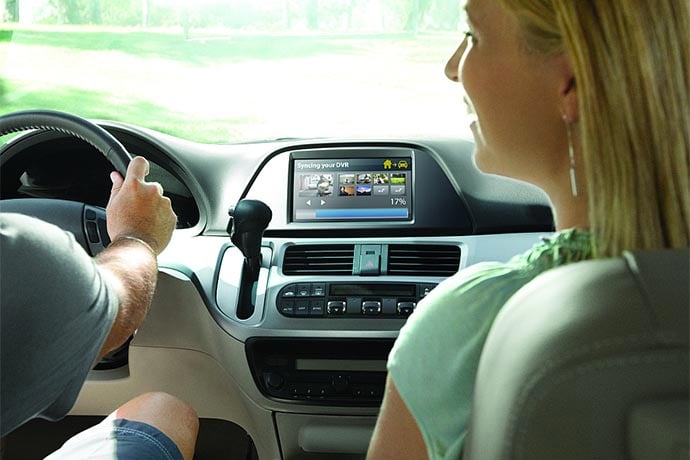You might wonder, why computers in cars? Computers are more reliable and use fewer wires than mechanical equivalents.
The computers, however, are not desktop, laptop, tablet, or phone computers we’re used to. They’re micro computers more like a Raspberry Pi, a set of chips with software loaded into memory. Each computer talks to other computers connected together into a network.
Several network types are used in cars based on what they control. For example, important controls like the dashboard, navigation, and engine use a Computer Area Network (CAN) with messages passed back and forth. Each computer in a CAN is able to process messages. Controls like turn signals don’t require complicated robust networks like CAN. They use a Local Interconnect Network (LIN) which has a master computer connected to subordinate computers, called slaves. There are other networks in cars, for example, a network to manage safety devices and newer types like FlexRay.
Which computers and networks exist in a car depends on the auto manufacturer and age of the car. Today the 18-80 computers found in cars are connected with cables. In the future, most likely wireless networks will be used.
Anybody can see the data their car generates, in real time, using a plug that connects to your car and broadcasts diagnostic data to an app on your phone or tablet. These plugs range in price from $15 to $100 USD. The more expensive plugs include better security transmitting data to your app, faster response rates, and in some cases, more data. The low cost plugs use a common ELM327 chipset with basic functionality.
This diagram from the print magazine shows some of the key controls and networks found in automobiles.

Learn More
On Board Diagnostics (OBD)
https://en.wikipedia.org/wiki/On-board_diagnostics
Engine Control Unit (ECU)
https://en.wikipedia.org/wiki/Engine_control_unit
The Computer Area Network (CAN) Bus
https://en.wikipedia.org/wiki/CAN_bus
http://www.talktomycar.co.uk/can.htm
http://www.flexautomotive.net/EMCFLEXBLOG/post/2015/09/08/can-bus-for-controller-area-network
Local Interconnect Network (LIN) Network
https://en.wikipedia.org/wiki/Local_Interconnect_Network
Automotive Safety Restraints (ASRB) Network
http://www.zlgmcu.com/NXP/automotive/pdf/auto_net_en.pdf
FlexRay Network
https://en.wikipedia.org/wiki/FlexRay
OBDuino
http://obduino.ca/
https://en.wikipedia.org/wiki/OBDuino
Use your iPhone to Scan Vehicle Codes And Read Sensor Data
http://www.instructables.com/id/Use-your-iPhone-to-Scan-Vehicle-Codes-And-Read-Sen/?ALLSTEPS
Car Hacking Tools of the Trade
The title is overly dramatic but this book excerpt explores different options for seeing message traffic and sensor data in your car. Lots of useful context.
http://makezine.com/2016/04/08/car-hacking-tools-trade/
https://www.nostarch.com/carhacking

